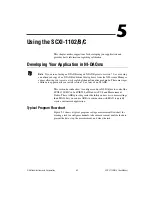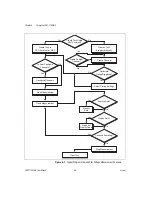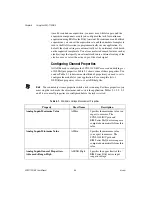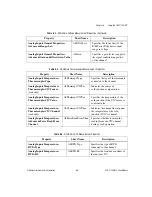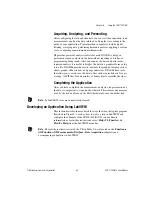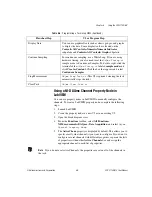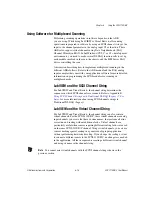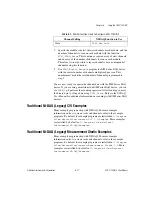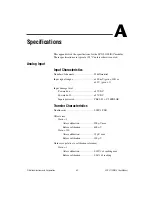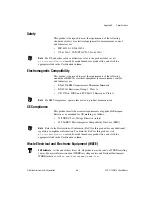
Chapter 5
Using the SCXI-1102/B/C
©
National Instruments Corporation
5-13
Note
You can create and configure the voltage measurement task in MAX and
load it into your application with the function call
NationalInstruments.DAQmx.DaqSystem.Local.LoadTask
.
Refer to the
NI Measurement Studio Help
for more information on creating NI-DAQmx
tasks in LabWindows/CVI and NI-DAQmx property information.
Programmable NI-DAQmx Properties
All of the different ADEs that configure the SCXI-1102/B/C access an
underlying set of NI-DAQmx properties. Tables 5-1, 5-2, and 5-3 provide
a list of some of the properties that configure the SCXI-1102/B/C. You can
use this list to determine what kind of properties you need to set to
configure the device for your application. For a complete list of
NI-DAQmx properties, refer to your ADE help file.
Note
not
complete lists of NI-DAQmx properties and do not
include every property you may need to configure voltage measurements. It is a
representative sample of important properties to configure voltage measurements. For a
complete list of NI-DAQmx properties and more information on NI-DAQmx properties,
refer to your ADE help file.
Developing Your Application in Traditional NI-DAQ
(Legacy)
Note
If you are not using an NI ADE, using an NI ADE prior to version 7.0, or are using
an unlicensed copy of an NI ADE, additional dialog boxes from the NI License Manager
appear allowing you to create a task or global channel in unlicensed mode. These messages
continue to appear until you install version 7.0 or later of an NI ADE.
This section describes how to configure and use Traditional NI-DAQ
(Legacy) to control the SCXI-1102/B/C in LabVIEW, LabWindows/CVI,
Measurement Studio, and other text-based ADEs. These NI ADEs provide
greater flexibility and access to more settings than MAX, but you can use
ADEs in conjunction with MAX to quickly create a customized
application.
After you have determined how you want to address the channels and
whether you want to configure the SCXI-1102/B/C in MAX or LabVIEW,
you can design your application using a typical program flow such as the
one shown in Figure 5-2.



